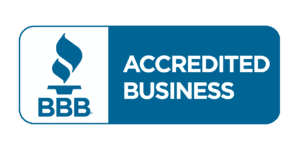In today’s digital landscape, it’s more important than ever to focus on Conversion Rate Optimization (CRO). CRO is the process of improving the percentage of website visitors who take a desired action, such as making a purchase or filling out a form.
Increasing your conversion rate can have a profound impact on your business. By optimizing your website, you can increase the number of leads, customers, and revenue you generate.
In this guide, we’ll break down the key principles of CRO and provide you with actionable tips to optimize your website and improve your conversion rate.
Understanding the Importance of Conversion Rate Optimization
Conversion rate optimization is important for several reasons. First, it allows you to maximize the return on investment (ROI) of your digital marketing efforts. By increasing your conversion rate, you’ll be able to generate more leads and sales without increasing your advertising spend.
Second, it can help you better understand your target audience. By analyzing the behavior and preferences of your website visitors, you can tailor your messaging and user experience to better meet their needs.
Finally, it’s a cost-effective way to improve your website’s performance. With CRO, you’re not investing in expensive advertising campaigns or website redesigns. Instead, you’re making incremental improvements to your existing website to generate more leads and sales.
The Key Principles of Conversion Rate Optimization
There are several principles that are fundamental to Conversion Rate Optimization. These include:
1. Understanding Your Customer Journey
The first step in a successful CRO strategy is understanding your customer journey. This means mapping out the various steps a customer takes on their way to making a purchase or taking another desired action on your website.
By understanding your customer journey, you can identify potential roadblocks or friction points that may be preventing customers from converting. For example, if you notice that a high percentage of visitors abandon their shopping cart on your e-commerce site, you may want to optimize your checkout process to reduce friction and improve conversion.
2. Conducting Data-Driven Analysis
To effectively optimize your website, you need to conduct data-driven analysis. This means analyzing your website traffic and performance metrics to identify key areas of improvement.
Some of the most important metrics to track include:
- Conversion rate
- Bounce rate
- Time on site
- Click-through rate
- Exit rate
By tracking these metrics, you can identify patterns and trends that can inform your CRO strategy.
3. Creating a Hypothesis
Once you’ve conducted your analysis, you need to develop a hypothesis. This is a statement that you believe will improve your website’s performance and increase your conversion rate.
For example, if you notice that visitors are spending very little time on your product pages, you may hypothesize that adding more product images and detailed descriptions will improve engagement and lead to more conversions.
4. Testing Your Hypothesis
After developing a hypothesis, you need to test it. This involves creating an A/B test, where you create two versions of a page – a control version and a test version with your proposed changes.
By splitting your traffic between the two pages, you can measure the impact of your changes on your conversion rate. If the test version outperforms the control version, you can be confident that your changes will lead to a higher conversion rate.
5. Continuous Improvement
Finally, it’s important to remember that conversion rate optimization is an ongoing process. You should continuously analyze your website’s performance and make incremental improvements to optimize your conversion rate over time.
Actionable Tips for Improving Conversion Rate
Now that you understand the key principles of Conversion Rate Optimization, let’s look at some actionable tips you can use to improve your website’s performance.
1. Optimize Your Landing Pages
Your landing pages are critical to your CRO strategy. These are the pages that visitors first land on when they arrive at your website, and they play a significant role in whether or not visitors convert.
To optimize your landing pages, make sure they have a clear value proposition, a strong call-to-action, and are mobile-friendly.
2. Simplify Your Forms
Forms are a critical component of many websites, but they can also be a major source of friction. To reduce the chance of visitors abandoning your forms, simplify them as much as possible.
Reduce the number of required fields, implement auto-fill features, and use clear and concise labels and instructions.
3. Optimize Your Site Speed
Site speed is a major factor in whether or not visitors will stay on your site and ultimately convert. To optimize your site speed, reduce the size of images and videos, use a content distribution network (CDN), and minimize the use of third-party scripts and plugins.
4. Personalize Your Messaging
Personalization can be a powerful tool in your CRO strategy. By tailoring your messaging to the specific needs and preferences of your audience, you can increase engagement and conversions.
One way to personalize your messaging is to use dynamic content that changes based on a visitor’s behavior and preferences. For example, you could show a different message to a first-time visitor compared to a returning visitor who has previously made a purchase.
5. Use Social Proof
Social proof is a powerful psychological concept that can be used to increase conversions. By showing that other people have purchased or used your product or service, you can build trust and credibility with potential customers.
Some ways to use social proof on your website include displaying customer reviews and ratings, highlighting the number of customers or sales, and featuring endorsements from influencers or industry experts.
Conclusion
Conversion rate optimization is a key component of a successful digital marketing strategy. By understanding the principles of CRO and implementing actionable tips, you can improve your website’s performance and generate more leads and sales.
Remember to continuously analyze your website’s performance and make incremental improvements over time to optimize your conversion rate. By doing so, you’ll be able to maximize the ROI of your digital marketing efforts and grow your business.









